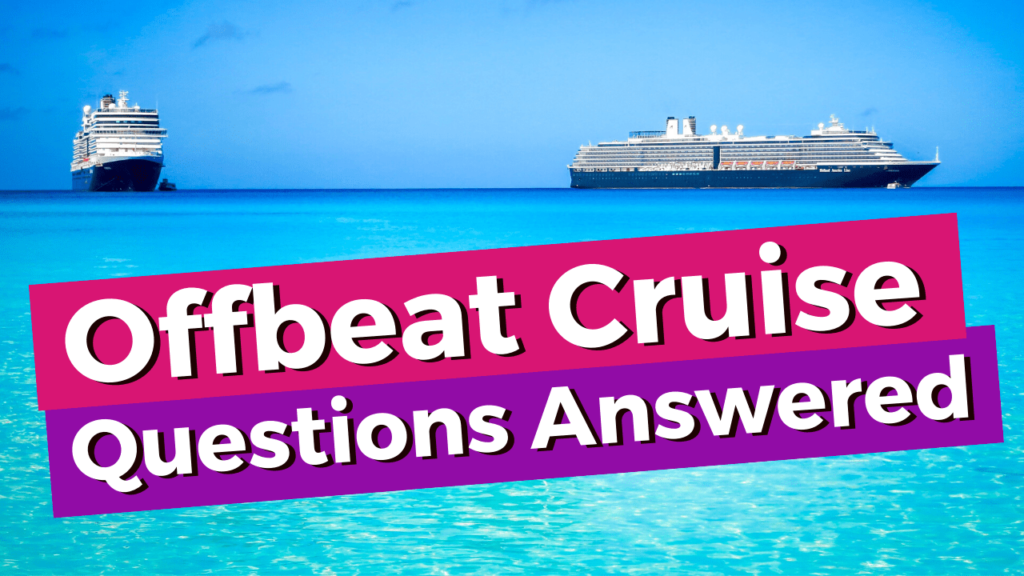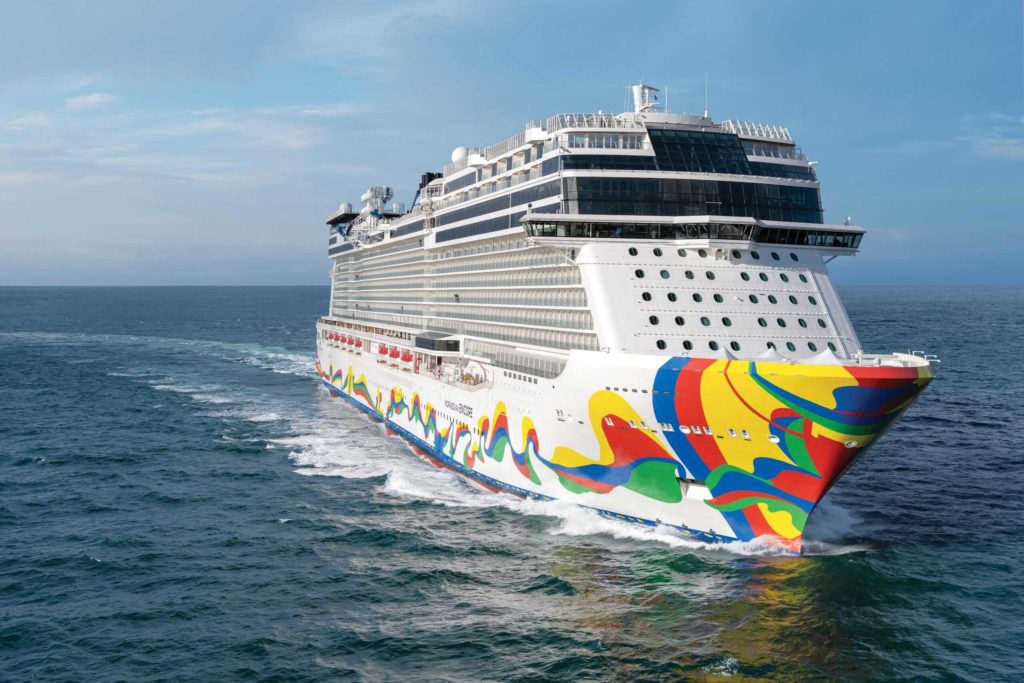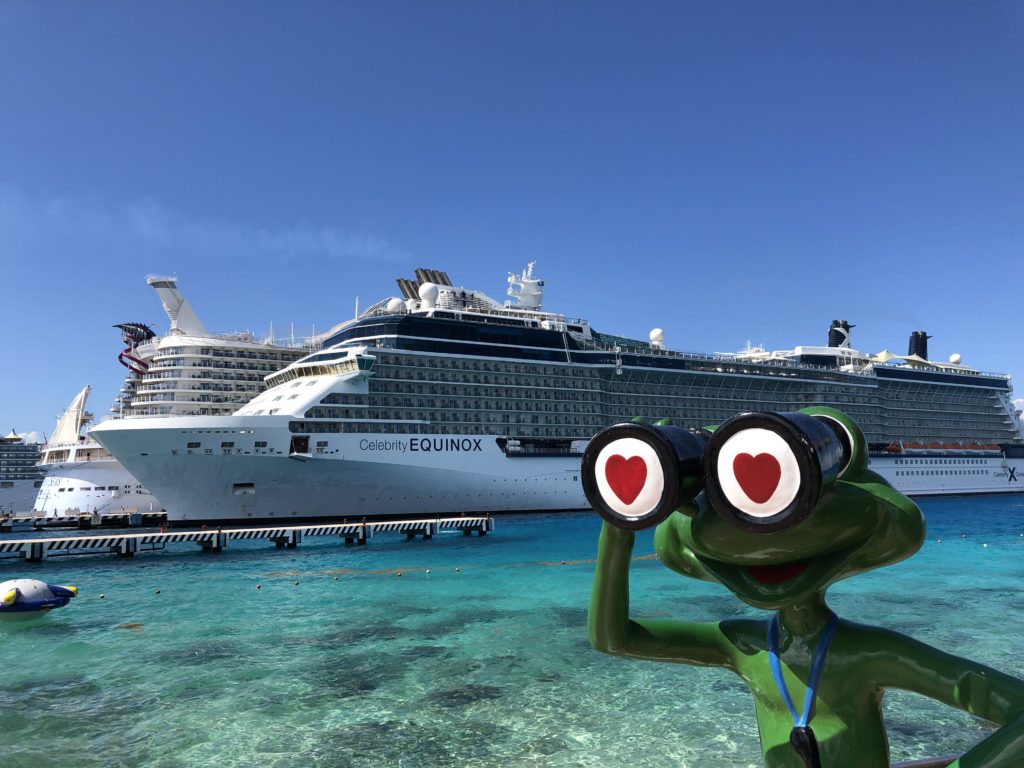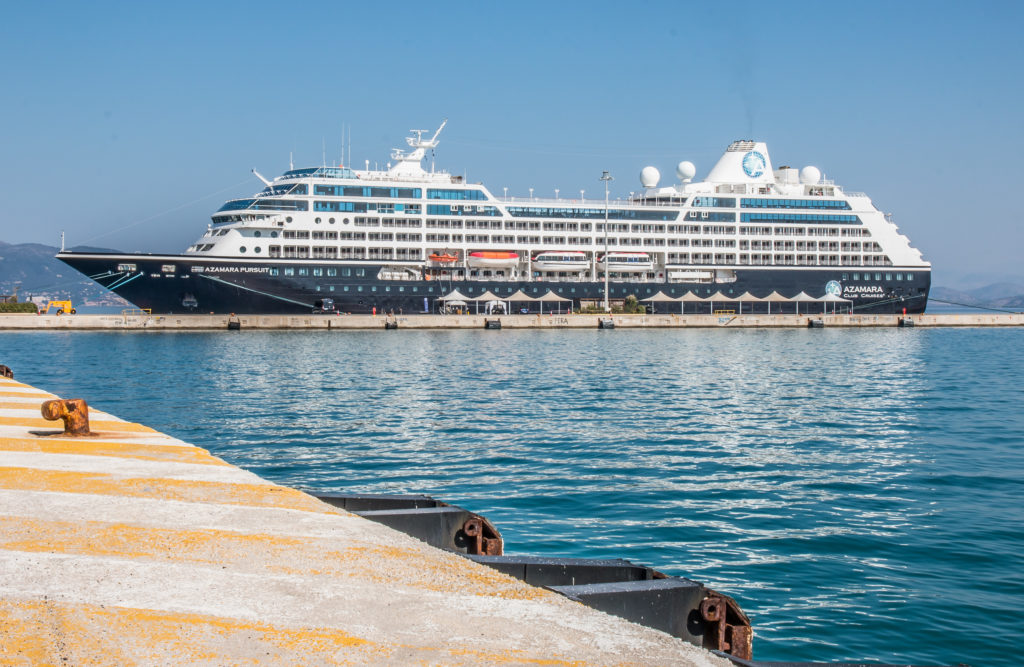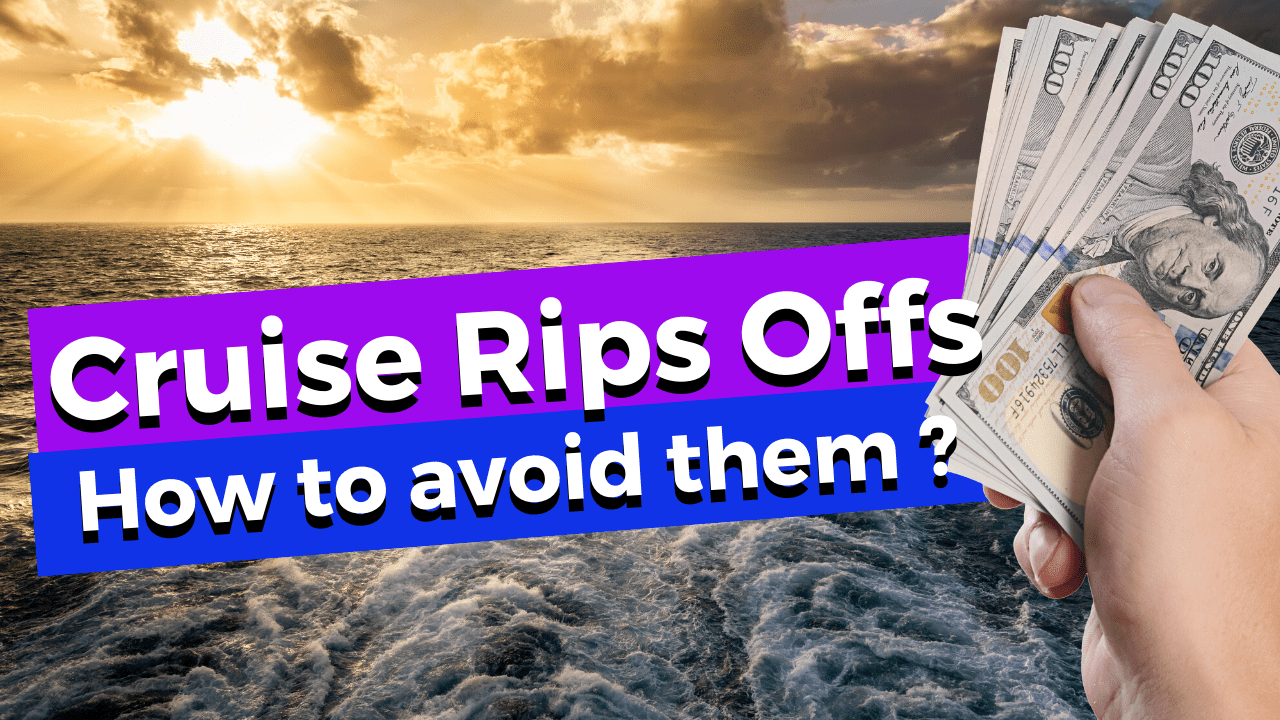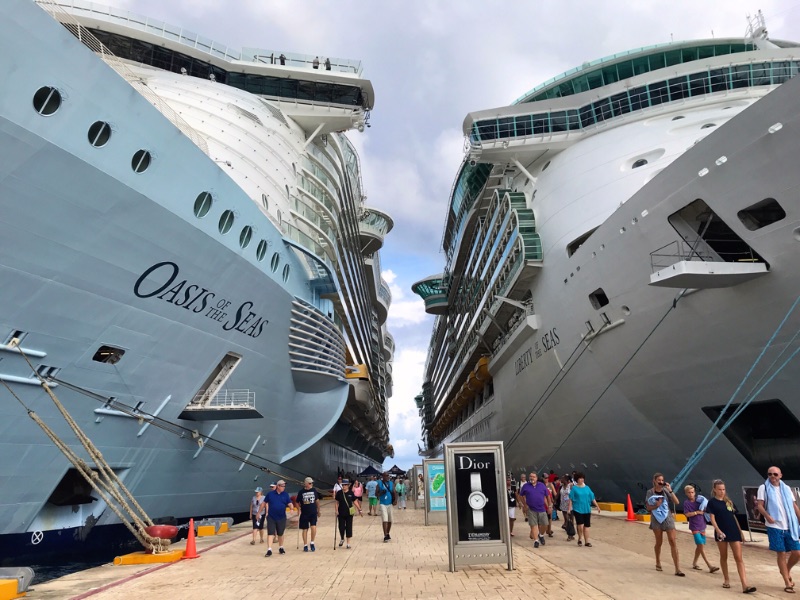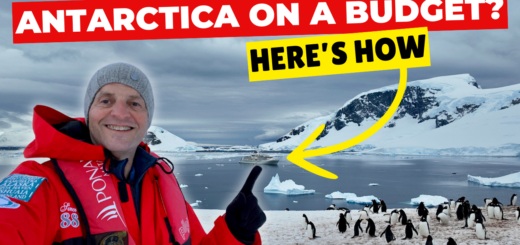8 Offbeat Cruise Ship Questions Passengers Ask Answered
You’re about to discover the answers to eight of the more unusual, curious and inquisitive questions about cruising.
They really are slightly unusual, and a little bit on the quirky side. So, I thought I would answer them all, starting with this one.
Watch my video answering Offbeat Cruise Questions
Watch on YouTube: https://youtu.be/W1cNRN7D2ug
#1 Is there a jail on board a cruise ship?
Actually there is. There’s what’s known as a brig.
If there’s some issue, normally passengers will be restricted to their cabin, but there is, on most cruise ships, a brig.
This is normally a pretty secure room, nonlinear security, where they can hold up rowdy passages, or in fact, I guess, crew until they get to the next port can hand them over to authorities if something serious has happened.
Now in reality, one of the big challenges on board cruise ships is crime and how much crime exists onboard a cruise.
The statistics suggest crime rates are not particularly high. However, it’s quite difficult to understand because there’s no requirement and no central registry because of the way that cruises are run and where they’re registered.
One of the ways of looking at crime is there are eight serious crimes, which cruise companies have to report if they’re either embarking or disembarking in the United States. Of those eight serious crimes, three of them are the most reported, that’s assaults, sexual assaults and thefts of large amounts of high value property.
However, it’s not really known how much kind of petty crime exists on board a cruise ship. There are no police on board and security will deal with most issues.
So, the things you tend to hear about are the more serious things.
Saying that, in terms of the amount of crime per thousand or hundreds of thousands of passengers, it’s really low on a cruise, so when a crime does happen on a cruise ship, it tends to get a lot of publicity, but it is kind of hard to get the stats.
But if you do fall foul and you do commit a crime or cause a disturbance, there is a brig on board, which you will be thrown into.
#2 How many people die on a cruise every year?
The number’s surprisingly small, around about 200 deaths are recorded on cruise ships. And bear in mind something like 21 / 22 million people cruise on cruise ships every year. It’s a pretty small number.
Most of those deaths are related to age, so dying of old age on board a cruise.
Things to look out for on a cruise is if you hear over the Tannoy system, over the loudspeakers ‘Operation Bright Star’- that means there’s a medical issue on board, some sort of medical emergency on board.
And if you hear Operation Rising Star, that means there has been a death on board.
Of course, the cruise lines are not normally likely going to publicise it, if it happens because it normally happens kind of discreetly in a cabin or whatever.
So, what do they do with the bodies? Well actually cruise ships do have a morgue and have to carry body bags and normally, the body is put in a body bag, it’ll be stored in the morgue.
Now what happens to that body, depends a little bit on the port. Some ports will want the body to be disembarked, I guess sometimes the family will want the body disembarked.
In other cases, the body will stay on board until the ship gets back to the port it started in, because that just makes it much easier for the cruise line and often for the family to deal with.
#3 Is it a ship or a boat?
The third question is, is it a ship or is it a boat?
A lot of people on cruises go crazy when people call a cruise ship a cruise boat.
So, what is the right terminology? Well, in the whole military area and all the maritime worlds, one of the rules that people use is you can put a boat on a ship, but you can’t put a ship on a boat.
If you look at cruise ships, they actually have boats on them, they have lifeboats on them, so that does make them a ship.
So, it’s kind of an informal thing. Another point of view is, anything over 20 metres i.e. over 60 feet, is considered a ship.
Actually, for example, in river cruising for a long time, they were called river boats because they were shorter than 60 feet long. However, the general view is that anything that’s over that size is a ship.
So as in the military world, anything over that size is likely to be called a ship. In practice, there’s no right or wrong.
However, people who are into cruising will tend to call it a ship and not a boat. You’ll even find some cruise captains, believe so strongly in it.
So, I have been on cruises, for example, on Celebrity Cruises, where Captain Kate is renowned for a badge that she wears, which says it’s a ship, not a boat.
#4 Why is the safety drill called a muster drill?
The next question I hear a lot and it’s actually one thing I wondered about for a long time is why is the safety drill called a Muster Drill?
It’s quite hard to find out the reason for that, but it seems to be it’s always been called that and it comes from the word muster, which means to gather, and it’s just stuck.
It’s become one of those terms for the safety drill. Very important, of course, the safety drill has to be done within 24 hours of passengers embarking. Since Costa Concordia that’s become even stricter.
And now cruise lines do that before the ship sets sail.
#5 Why do Bill W, Dorothy and Jimmy have so many friends?
The fifth question is, if you’ve ever looked at a daily program, you’ll see there’s a couple of people have lots of friends.
So, Bill and Dorothy, for example, have lots of friends.
So, the question you could ask is, why on earth do Bill W., Dorothy and Jimmy have so many friends that they actually have a meetup?
Well Friends of Bill W was the one that really kicked it all off, and it’s because cruise lines, originally, didn’t want to say that they were hosting Alcoholics Anonymous meetings.
Bill W. refers to William or Bill W. Wilson, who was one of the co-founders of the AA.
Dorothy was the codename, way back when, for the LGBT community. You’ll find nowadays, that very few cruise lines talk about Friends of Dorothy meetings, and they will just call them LGBT meetups. Nowadays, it’s the Dorothy slang word has kind of disappeared and people just call it LGBT.
The other one that you may see, although it’s much less common is Friends of Jimmy. Friends of Jimmy K. refers to the NA or Narcotics Anonymous, which was founded by James Kinnon. Most cruise lines though, will tend to direct people looking for an NA meeting, or Friends of Jimmy K. to the Friends of Bill W. meeting.
So that’s why Bill, Jimmy and Dorothy have so many friends and meetups on board the ship.
#6 Is there saltwater in the toilets?
Another question that I hear a lot is, is it saltwater in the toilets?
Of course, no one’s going to get close enough to actually find out and test for themselves. Well, actually, originally, it was saltwater in the toilets. That’s before desalination plants and when they were really expensive and were just prohibitive.
So saltwater was actually used both in the showers and also in the toilets. That created a lot of problems because, of course, rust and all sorts of problems in the actual equipment, but it was originally saltwater, today, it’s not saltwater.
#7 Where does the water come from?
The next question is, where does all this clean pure non salted water come from?
There are actually three places that it can come from on a cruise ship. The first, and the most traditional of all, is what’s known as bunkering.
Bunkering is the maritime term for loading water onboard a ship and of course, if water is bunkered on a cruise ship, it’s tested on board to make sure, it’s all safe to drink. However, nowadays cruise ships will tend to make their own water.
And two ways of doing that, the first of the processes that cruise ships use themselves on board is known as steam evaporation.
So, this is where the cruise ship uses the heat, the huge amount of heat that’s generated by the engines.
They take saltwater, they heat it up, it evaporates, the water evaporates, all the salts and stuff is left behind, they then turn the steam back into water through condensation and they have water that they can then treat and use.
The other process which is the most common process is known as reverse osmosis.
So, what happens here is saltwater is taken on board, and is basically pushed through a microscopic screen, which then keeps all the salts and the stuff like that behind, and only the fresh clean water goes through, of course, the water is then treated and made sure that it’s safe to drink and consume.
So those are the three key ways that the ship gets water that people can drink and use on board.
Water is perfectly safe to drink on board, it’s processed and treated extremely thoroughly before it’s sent through the ship for consumption and use.
#8 What happens with waste?
The next question is around waste. Now clearly, on ships of several thousand people, an enormous amount of waste is going to be generated both human waste and rubbish waste.
So, what actually happens to all of that waste?
Let’s talk, first of all, about sewage.
By international law, ocean going vessels are actually able to put sewage in the sea once they’re 12 miles out from land and they’re going a certain speed.
However, cruise ships are however not allowed to do it. So, all cruise liners which are part of the CLIA, the Cruise Line Association, abide by policy which says that no untreated sewage will be put into the sea anywhere
in the world at any time.
So, what happens?
Well, it’s treated on board. First of all, they take black water, which is basically human waste, and they take grey water, so that’s water that’s come out of things like the kitchens or the basins or the showers.
Those two waters are combined in certain ratios, they’re then treated by normally sort of bacterial treatment, which purifies it. It then goes through another process, and they use UV to really treat the water rather than chlorine or chemicals because ultimately the water, once it’s treated, and it is back to being completely safe and free of impurities, it is released, normally, back into the ocean.
When it comes to food waste, all the food waste is collected and it goes through these grinders and turn basically into a runny mixture, which then is normally also able to then be released into the sea.
Sometimes, of course, it is then pumped in on land. When it comes to other items, there’s also a whole process.
What’s important to know is, cruise ships have an Environmental Officer on board who is in charge of all of these various operations. When it comes to waste, your cabin steward, for example, will sort through all of your waste and sort it into plastics, into metals, into paper.
All of the glass collected on board, is sorted by colour, it’s ground down, and then is disembarked because it’s sold off as waste that can be recycled on land. Paper is sorted; it’s all bundled up and again that’s handed over and sold for recycling and the same is done separately for cardboard and of course, for things like metal cans, which are all crushed down.
So, there’s a big operation.
One of the things I would encourage you to do if you’re ever on a cruise ship that offers a full behind-the-scenes tour, which you’ll often have to pay for, but it will take you right and down into the depths of the ship and you get to meet the Environmental Officer and you get to see the whole process in place, and it’s really, really interesting to see how they take the waste, both human waste and the grey water, and paper and glass and cans.
And it’s really good to see first-hand how it’s all dealt with.
Those are the answers to eight of the most probing, unusual and slightly quirky questions that I hear about cruising.
Hope you found that helpful, I’d love it if you watch another one of my videos, packed full of cruising tips and advice right now.

